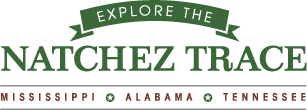Tupelo, MS – A new National Park Service (NPS) report shows that 5,846,473 visitors to Natchez Trace Parkway in 2014 spent $136 million in communities near the park, which supported 1,843 jobs in the local area. Because the Parkway extends through three states, the NPS has calculated that 80% of the spending is in Mississippi, 13% in Tennessee, and 7% in Alabama.
“The Natchez Trace Parkway extends 444-miles through 41 county and municipal jurisdictions in the states of Tennessee, Alabama and Mississippi,” said Superintendent Mary Risser. “We attract visitors from across the U.S. and around the world that come here to experience the parkway and then spend time and money enjoying the services provided by our neighboring communities. The National Park Service is proud to have been entrusted with the care of America’s most treasured places and delighted that the visitors we welcome generate significant contributions to the local, state, and national economies.”
In addition, more than 6.5 million people visited the National Park Service sites in Mississippi and spent $198 million within the state, supported 2,877 jobs, and contributed $210 million to the state’s economy. The National Park Service sites within Mississippi include Natchez National Historic Park, Vicksburg National Military Park, Brices Cross Roads National Battlefield Site, Natchez Trace National Scenic Trail, Tupelo National Battlefield, and part of Gulf Islands National Seashore.
The peer-reviewed visitor spending analysis was conducted by U.S. Geological Survey economists Catherine Cullinane Thomas and Christopher Huber and National Park Service economist Lynne Koontz. The report shows $15.7 billion of direct spending by 292.8 million park visitors in communities within 60 miles of a national park. This spending supported 277,000 jobs nationally;
-More-
235,600 of those jobs are found in these gateway communities. The cumulative benefit to the U.S. economy was $29.7 billion.
According to the 2014 report, most park visitor spending was for lodging (30.6 percent) followed by food and beverages (20.3 percent), gas and oil (11.9 percent), admissions and fees (10.2 percent) and souvenirs and other expenses (9.9 percent).
To download the report visit http://www.nature.nps.gov/socialscience/economics.cfm The report includes information for visitor spending at individual parks and by state.
To learn more about the economic impact of all national park units in Tennessee, Alabama, and Mississippi, and how the National Park Service works with communities to preserve local history, conserve the environment, and provide local recreational opportunities, go to:
About the National Park Service. More than 20,000 National Park Service employees care for America’s 398 national parks and work with communities across the nation to help preserve local history and create close-to-home recreational opportunities. Learn more at www.nps.gov
